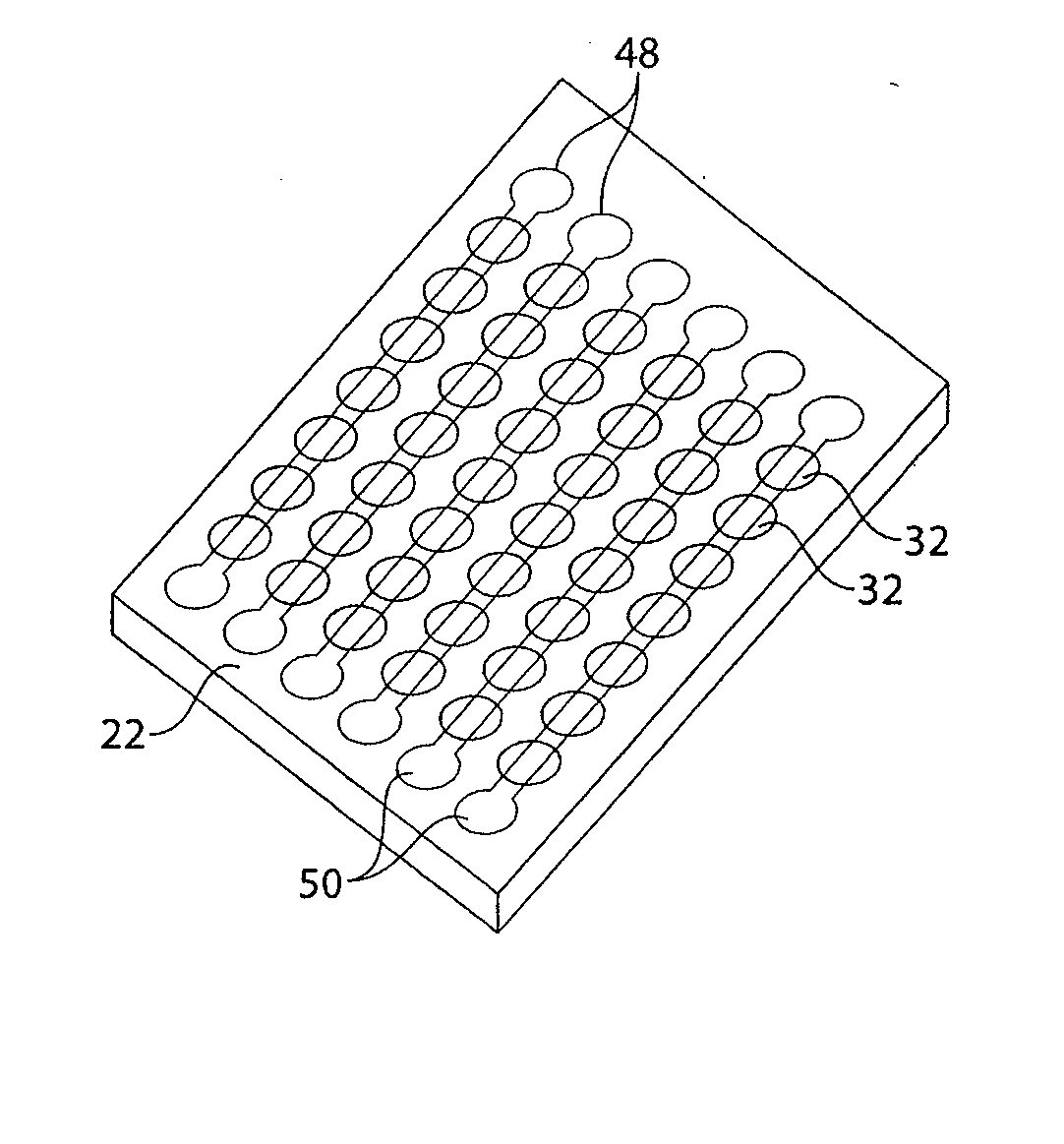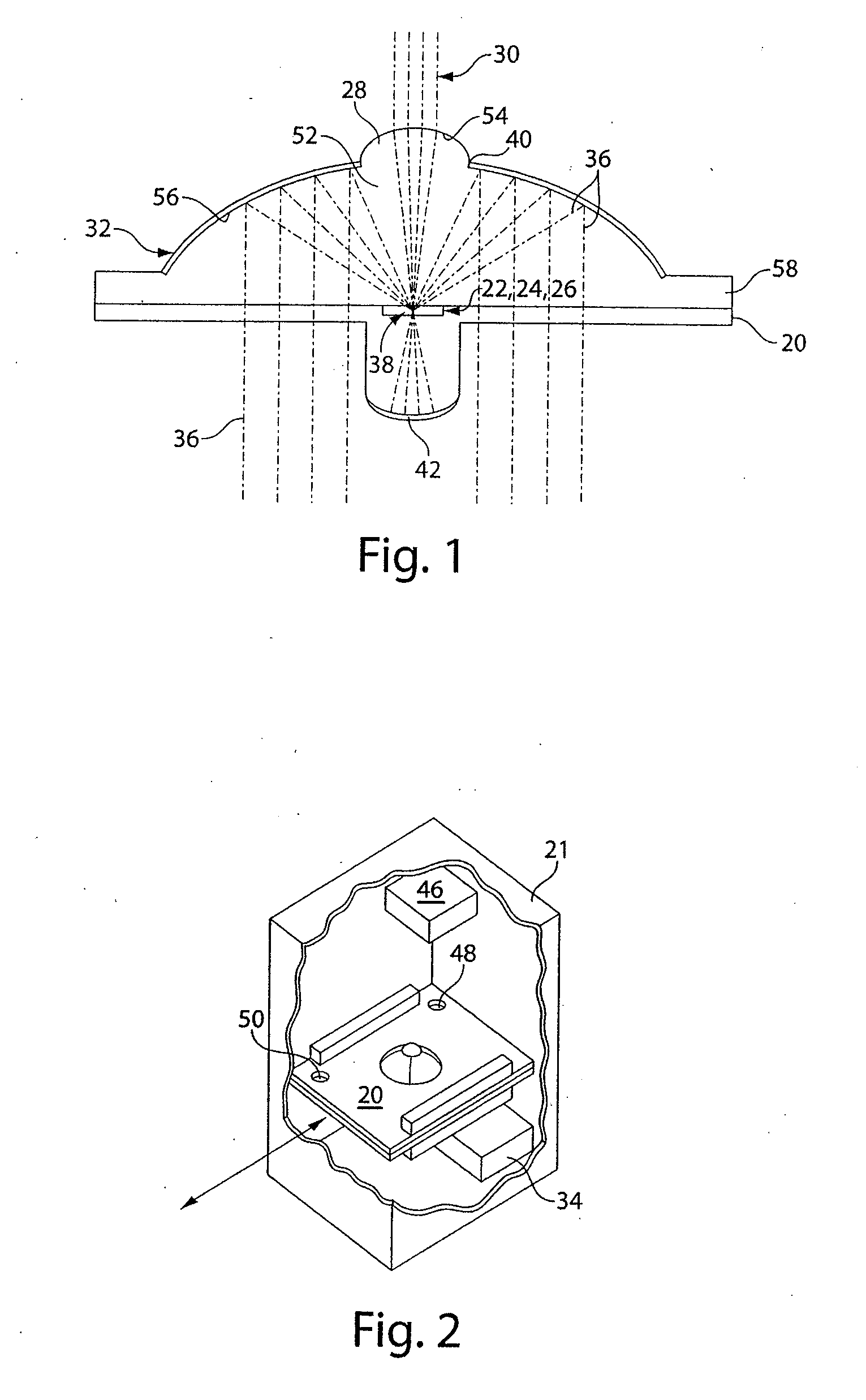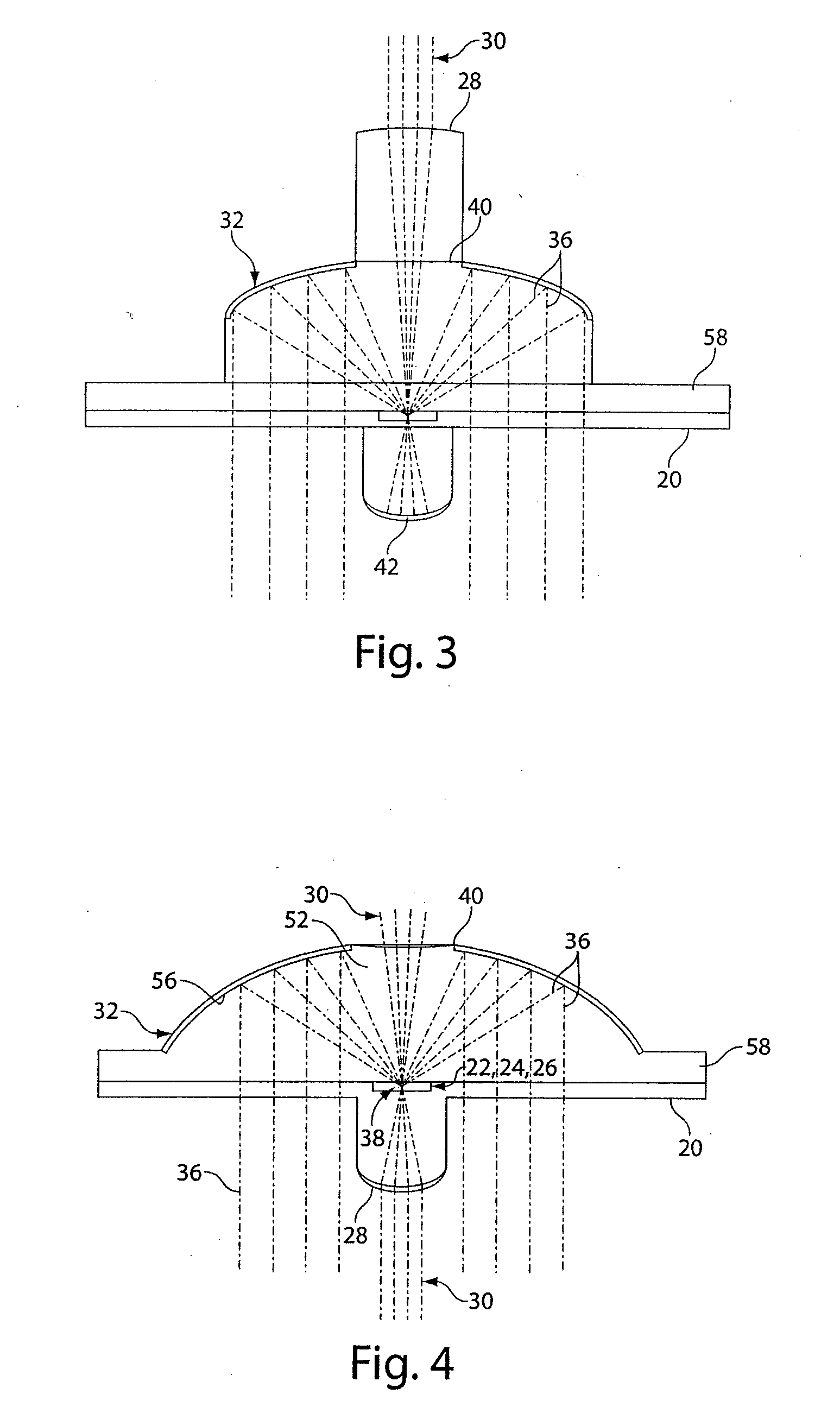Systems and methods for measurement optimization
a measurement optimization and optimization technology, applied in the field of measurement optimization systems and methods, can solve the problems of preventing high numerical aperture lenses from being incorporated in many detection systems, affecting so as to reduce the impact of vibration on the reliability of information, reduce the cost, and detect and/or analyze rapid and reliable
- Summary
- Abstract
- Description
- Claims
- Application Information
AI Technical Summary
Benefits of technology
Problems solved by technology
Method used
Image
Examples
Embodiment Construction
[0039] The invention provides systems and methods for detecting whether an agent is present in a sample. The systems and method generally use chips having microfluidic channels incorporated therein. Optical components are incorporated into the chip to provide various benefits over prior art systems with components that are separate from the chip. In some embodiments, one or more reflectors and / or illuminators are incorporated into the chip during manufacturing to reduce overall system cost. Incorporating illuminators and / or reflectors into the chip can eliminate the need for costly optical components in the system—like adjustable objective lenses. Moreover, incorporating optical components into the chip can make the system less susceptible to vibrations and / or provide a chip that is manufactured in focus. The optical components can be arranged to maximize their numerical aperture and thus improve the signal to noise ratio of emissions received by the system. Still, in some embodimen...
PUM
 Login to View More
Login to View More Abstract
Description
Claims
Application Information
 Login to View More
Login to View More - R&D
- Intellectual Property
- Life Sciences
- Materials
- Tech Scout
- Unparalleled Data Quality
- Higher Quality Content
- 60% Fewer Hallucinations
Browse by: Latest US Patents, China's latest patents, Technical Efficacy Thesaurus, Application Domain, Technology Topic, Popular Technical Reports.
© 2025 PatSnap. All rights reserved.Legal|Privacy policy|Modern Slavery Act Transparency Statement|Sitemap|About US| Contact US: help@patsnap.com



